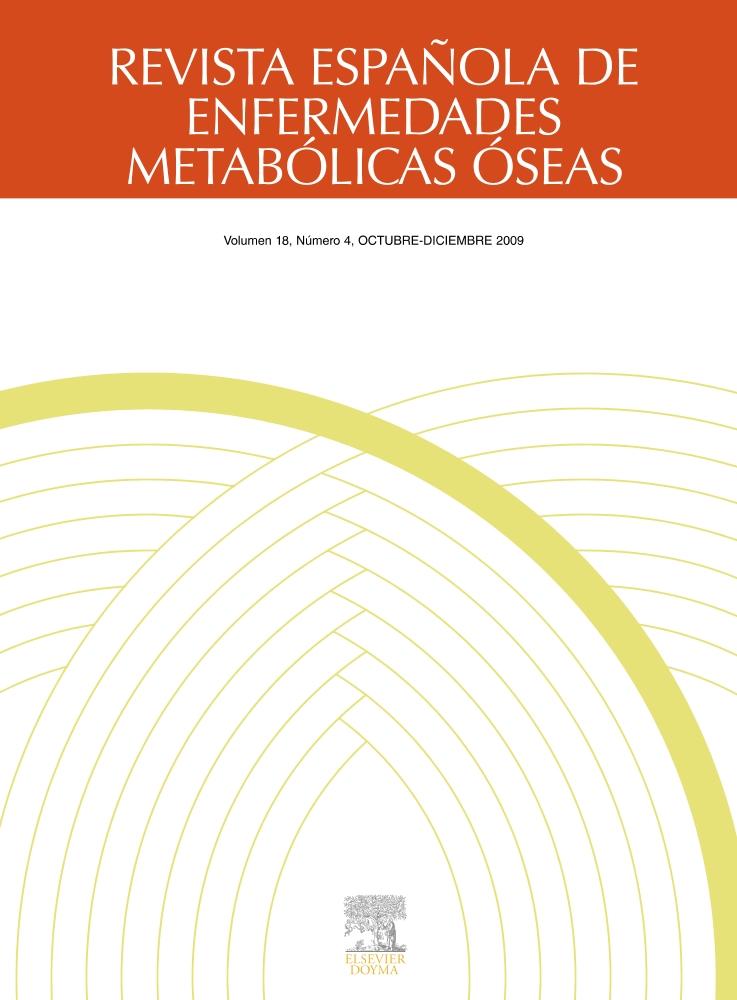Objetivo. Obtener un patrón normal de densitometría ósea en niños y adolescentes sanos y su relación con la edad y los parámetros antropométricos de talla, peso e índice de la masa corporal (IMC).
Pacientes y métodos. Se estudiaron 113 niños y adolescentes, 85 hombres y 54 mujeres (edad: 10-18 años), estratificados por sexo y edad. Fueron causa de exclusión las enfermedades y tratamientos que pueden afectar el metabolismo óseo, la práctica de deportes de competición y la inactividad física prolongada. Se determinó la densidad mineral ósea (DMO) en columna lumbar (L2-L4), cuello de fémur, trocánter y triángulo de Ward, mediante absorciometría dual de rayos X. Los valores de DMO se correlacionaron con la edad y con cada uno de los parámetros antropométricos.
Resultados. La DMO de columna lumbar aumenta significativamente con la edad en ambos sexos (p < 0,001), desde 0,736 ± 0,115 a los 10-12 años hasta 1,013 ± 0,066 g/cm2 a los 16-18 años en mujeres y en los hombres desde 0,664 ± 0,054 hasta 1,003 ± 0,096 g/cm2 a las mismas edades. El pico máximo es igual en ambos sexos, alcanzándose antes en las mujeres (14-16 años) que en los hombres (16-18 años). Se observó diferencia significativa de la DMO lumbar según el sexo, en todos los grupos de edad, excepto a los 16-18 años. La DMO de cuello de fémur aumenta en mujeres desde 0,708 ± 0,106 hasta 0,893 ± 0,052 g/cm2 a los 10-12 y 16-18 años, respectivamente y en hombres desde 0,736 ± 0,066 hasta 1,006 ± 0,117 g/cm2, a las mismas edades. El pico de masa ósea de cuello de fémur es mayor en hombres y se alcanza a los 16-18 años. Se observó diferencia significativa de la DMO de cuello de fémur entre hombres y mujeres sólo a los 16-18 años. Existe correlación ( p < 0,001) entre la DMO lumbar y edad, talla, peso e IMC en ambos sexos. El peso es mejor predictor de DMO lumbar (R2 = 0,53) y de cuello de fémur (R2 = 0,50) que la edad, la talla y el IMC.
Conclusiones. 1. Se establecen patrones de normalidad de DMO en una población sana de niños y adolescentes. 2. Existe correlación entre la densidad ósea y la edad, talla, peso e índice de masa corporal. 3. La densidad ósea lumbar es mayor en las mujeres en todas las edades. 4. La densidad ósea de cuello de fémur es mayor en hombres desde los 10 a 18 años.
Objective. To obtain a normal pattern of bone densitometry in healthy children and adolescents and its relationship with age and anthropometric parameters of height, weight and body mass index (BMI).
Patients and methods. A total of 113 children an adolescents, 85 males and 54 females (age: 10-18 years), stratified by sex and age were studied. The exclusion criteria were diseases and therapies which might influence on bone metabolism, practice of competition sports and prolonged physical inactivity. Bone mineral density (BMD) at the lumbar spine was measured (L2-L4), femoral neck, trochanter and Ward triangle by means of dual X-ray absorptiometry. BMD values were correlated with age and every anthropometric parameter.
Results. BMD at lumbar spine increased significantly with age in both sexes (p < 0.001), from 0.736 ± 0.115 at 10-12 years up to 1.013 ±0.066 g/cm2 at 16-18 years among women and from 0.664 ± 0.054 up to 1.003 ±0.096 g/cm2 among men at the same ages. The peak value was the same for both sexes, ant it was obtained earlier in women (14-16 years) than in men (16-18 years). A significant difference was observed in lumbar BMD according to sex in all age groups, with the exception of the 16-18 years group. BMD at the femoral neck increased among women from 0.708 ± 0.106 up to 0.893 ±0.052 g/cm2 at 10-12 years and 16-18 years, respectively, and among men from 0.736 ± 0.066 up to 1.006 ± 0.117 g/cm2 at the same ages. The bone mass peak at the femoral neck was higher among men and was reached at 16-18 years. A significant difference was observed in BMD at the femoral neck between men and women only at 16-18 years. There was a correlation (p < 0.001) between lumbar BMD and age, height, weight and BMI in both sexes. Weight was a better predictor of lumbar BMD (R2 = 0.53) and femoral neck (R2 = 0.50) than age, height and BMI.
Conclusions. 1. Normality patterns are established of BMD in a healthy population of children and adolescents. 2. There is a correlation between bone density and age, heigth, weigth and body mass index. 3. Lumbar bone density is higher in women at all ages. 4. Bone density at the femoral neck is higher among men from 10 to 18 years.


